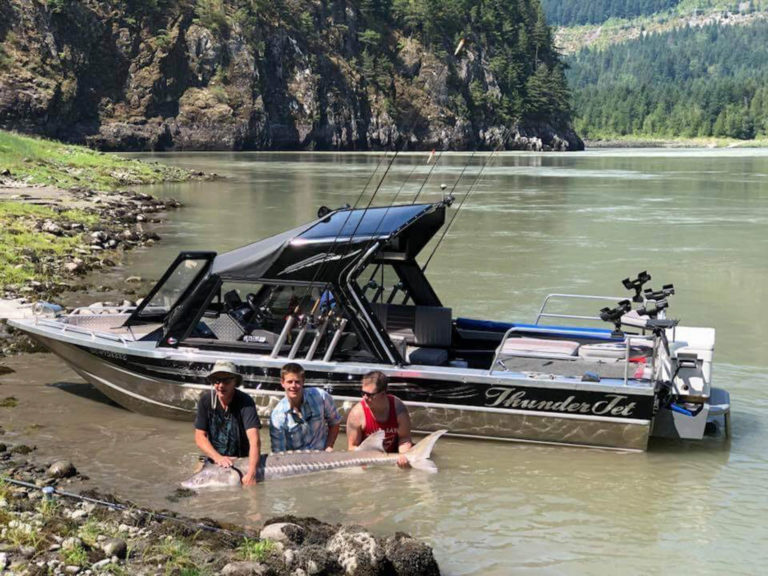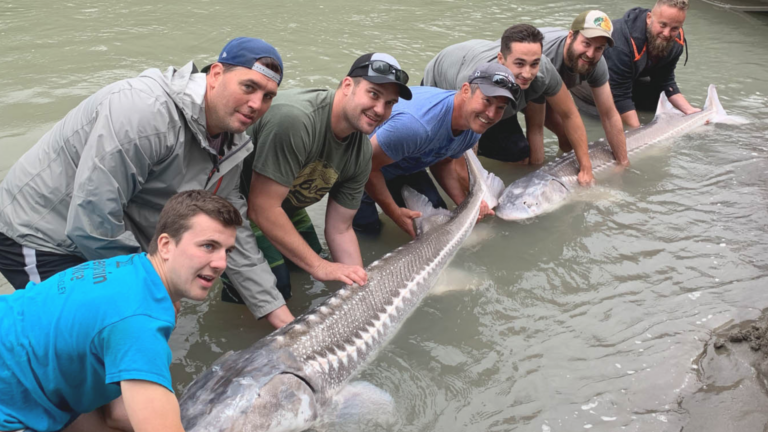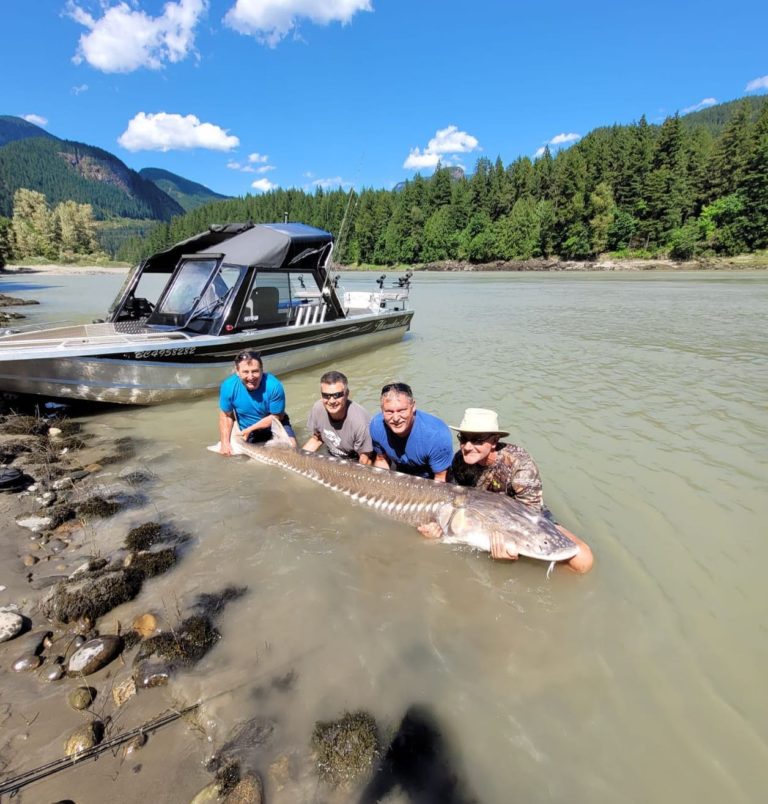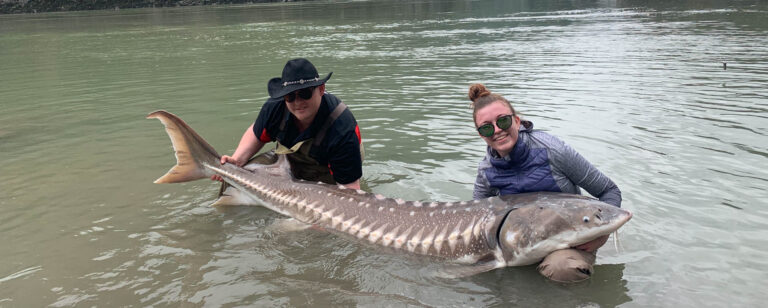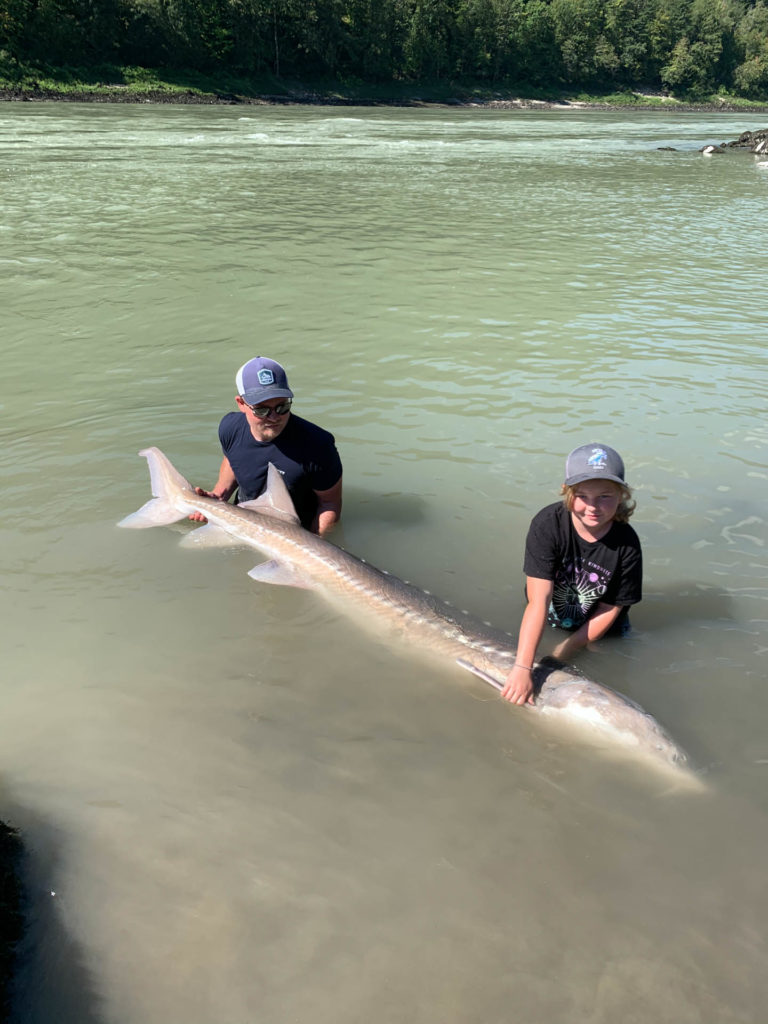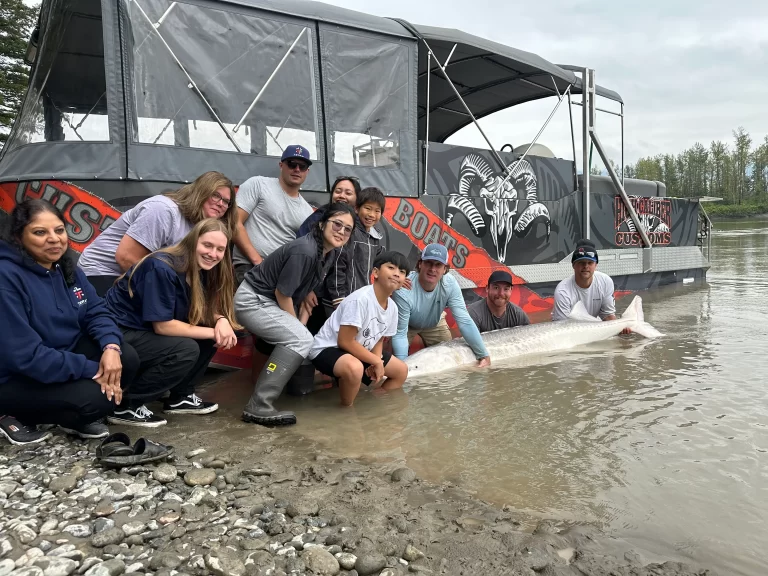Why Ethical Catch-and-Release Fishing is Essential for Fraser River Sturgeon
Sturgeon fishing on the Fraser River in British Columbia is one of the most thrilling angling experiences in the world. These prehistoric giants, some reaching over 10 feet long and 1,000 pounds, are the largest freshwater fish in North America. However, responsible angling is crucial to protecting their populations for future generations. This guide explores the best practices for ethical catch-and-release sturgeon fishing, the science behind conservation, and how anglers can contribute to sustainable fishing efforts.
The History of Overfishing and Conservation Efforts
White sturgeon (Acipenser transmontanus) has survived for over 150 million years, but human activity nearly pushed them to extinction. In the 1800s and early 1900s, commercial fishing for sturgeon caviar caused a rapid population decline, leading to severe restrictions and the eventual banning of commercial sturgeon fishing in 1994.
Today, thanks to conservation groups like the Fraser River Sturgeon Conservation Society (FRSCS) and Fisheries and Oceans Canada (DFO), sturgeon populations are closely monitored. Catch-and-release sportfishing has become a key part of conservation, allowing anglers to experience the thrill of battling these massive fish while ensuring their survival.
How Catch-and-Release Protects Sturgeon Populations
- Sturgeons take 20-30 years to mature, making them highly vulnerable to overfishing.
- Catch-and-release allows researchers to tag and track population health, contributing valuable data.
- Proper handling techniques reduce stress and injury, increasing survival rates after release.
The Science Behind Sturgeon Conservation and Responsible Angling
How Sturgeon Physiology Affects Their Response to Being Caught
Unlike many fish, white sturgeon lack a traditional swim bladder, meaning they rely on their cartilaginous skeleton and muscle strength to move through deep waters. This makes them highly susceptible to exhaustion when caught, especially in warm water conditions.
- Oxygen levels: Sturgeon require more time to recover in warmer waters, as lower oxygen levels make it harder for them to breathe after a long fight.
- Handling stress: Studies show that improper handling, including extended air exposure or rough treatment, can significantly increase post-release mortality.
Effects of Improper Catch-and-Release Practices
- Dragging a sturgeon onto rocks or dry land can cause internal injuries and skin abrasions.
- Keeping a sturgeon out of the water too long reduces oxygen intake, increasing stress.
- Holding a sturgeon incorrectly by the tail or gills can damage vertebrae and vital organs.
Best Practices for Catch-and-Release Sturgeon Fishing
Step-by-Step Guide to Safe Sturgeon Handling
- Use the Right Gear
- Heavy-duty rods and reels reduce fight time, minimizing stress on the fish.
- 80-100 lb test braided line ensures a strong, controlled catch.
- Circle hooks are recommended as they prevent deep hooking injuries.
- Landing the Sturgeon Correctly
- Always keep the sturgeon in the water while handling it.
- Use a rubberized landing mat if handling the fish near the boat.
- Unhooking and Handling with Care
- Use long-nose pliers to remove the hook gently.
- Avoid touching the gills or eyes.
- Lifting and Supporting the Fish
- If lifting for a photo, ensure even weight distribution under the belly.
- Never hold a sturgeon vertically or by the tail.
- Releasing the Sturgeon Safely
- Hold the fish upright in the water until it regains full strength.
- Let the sturgeon swim away on its own; never force it.
Common Mistakes That Harm Sturgeon and How to Avoid Them
- Dragging sturgeon onto shore: Keep fish in the water to prevent injury.
- Using barbed hooks: Switch to barbless hooks for easier removal.
- Holding sturgeon out of water too long: Aim for less than 60 seconds.
- Not using proper equipment: Use heavy gear to avoid long, exhausting fights.
The Role of Anglers in Sturgeon Conservation Efforts
How Anglers Contribute to Scientific Research
Many Fraser River sturgeon are part of conservation groups’ tracking and tagging programs. If you catch a tagged sturgeon, recording and reporting the tag number helps scientists monitor migration patterns, growth rates, and population trends.
How to Report a Tagged Sturgeon:
- Note the tag number, approximate size, and location of the catch.
- Report the information to the Fraser River Sturgeon Conservation Society (FRSCS).
Supporting Conservation Beyond Fishing
- Participate in catch-and-release research programs.
- Donate to sturgeon conservation organizations.
- Educate others about ethical sturgeon fishing practices.
Sustainable Fishing and Indigenous Stewardship
First Nations Fishing Traditions and Conservation
First Nations communities such as the Stó:lō, Secwépemc, and Nlaka’pamux have relied on the Fraser River’s bounty for centuries. Indigenous fishing traditions prioritize sustainability, with many First Nations practicing selective harvesting to preserve fish stocks.
Addressing Concerns Over Gill Net Bycatch
While Indigenous fishing rights are protected, gill nets used for salmon fishing can unintentionally catch sturgeon. Conservation groups are working with First Nations fishers to develop alternative fishing methods that reduce sturgeon bycatch.
Seasonal Considerations for Catch-and-Release Sturgeon Fishing
- Spring (March-May): Sturgeon begins feeding more actively as the water warms.
- Summer (June-August): Extra care is needed as low oxygen levels can increase fish stress.
- Fall (September-November): Peak season with high feeding activity due to salmon runs.
- Winter (December-February): Fish move to deep pools, requiring more patience.
How to Book a Conservation-Focused Sturgeon Fishing Trip
- Choose a licensed guide who follows ethical catch-and-release practices.
- Ask about conservation efforts supported by the charter service.
- Ensure proper gear and handling techniques are used on your trip.
By selecting a sustainable sturgeon fishing charter, you contribute to ongoing conservation efforts while enjoying a world-class fishing experience.
Final Thoughts
Ethical catch-and-release sturgeon fishing on the Fraser River is not just about the thrill of landing a giant fish—it is about protecting a species that has thrived for millions of years. By following best practices, reporting tagged fish, and supporting conservation initiatives, anglers can help ensure that future generations will continue to experience the excitement of sturgeon fishing in British Columbia’s Fraser River.
Frequently Asked Questions
What is the best way to handle a sturgeon during catch-and-release fishing?
The best way to handle a sturgeon is to keep it in the water as much as possible, use a rubberized landing mat if needed, and support its weight evenly when lifting. Avoid touching the gills or dragging it onto dry land; always allow the fish time to recover before releasing it.
How can I report a tagged sturgeon?
If you catch a tagged sturgeon, note the tag number, approximate size, and location of the catch. You can report this information to the Fraser River Sturgeon Conservation Society (FRSCS), which uses the data to track population health and migration patterns.
Why is barbless tackle recommended for sturgeon fishing?
Barbless hooks make it easier to remove the hook without causing excessive damage to the sturgeon’s mouth or gills. This reduces stress and improves the chances of a successful release with minimal harm to the fish.

